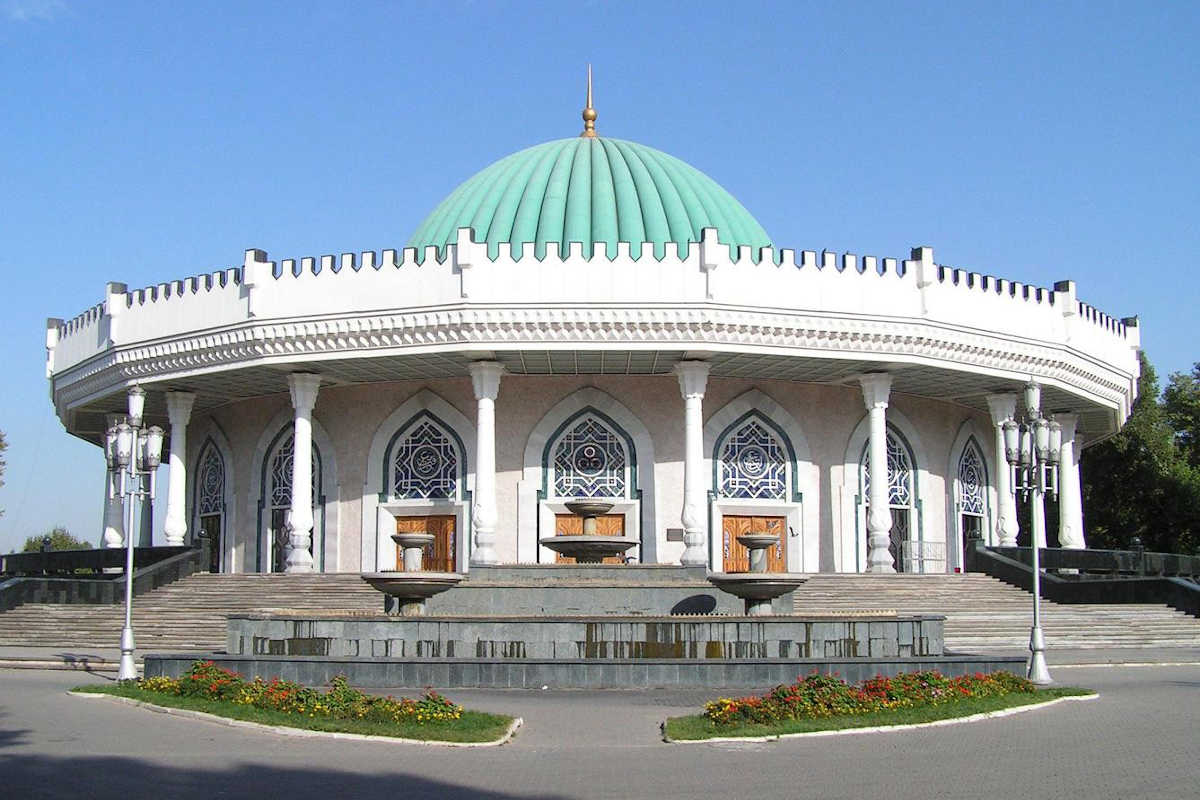Tashkent - Museum of Temurid History
The Uzbek State Museum of Temurid History (or, as it is popularly known, the Amir Temur Museum) is located in the capital of Uzbekistan – in the heart of the city of Tashkent. It was opened in 1996 and is dedicated to the powerful ruler, the Mongol leader Amir Temur (or Tamerlane) and the history of the development of the entire Central Asian region during his reign and dynasty.

The museum often participates in various international exhibitions, so it has made its material and spiritual values known all over the world. Some rare artefacts from the collection have even been exhibited at various foreign exhibitions: the French “Timurid Revival”, the German “Expo-2000”, the Australian “Colours of Fabrics and Ceramics” at the Power House Museum. Various exhibitions are constantly held at the Temurid Museum: “Rare Manuscripts” in cooperation with the Indian Embassy, “Miniature Painting” with the Iranian Embassy and “Far and Near Oman” with the National Department of the Sultanate of Oman.
When the country was recognised as independent in 1991, great attention began to be paid to restoring Uzbek culture and recognising the value of various historical figures who had played an important role in the development of civilised society. Amir Temur is such a personality, a political and military leader, creator of new cultural, scientific and educational reforms and creator of trade relations. Having created a great country, he consolidated its power by uniting the peoples of Uzbekistan. The reign of Amir Temur contributed to the development of scientific and cultural, educational and architectural, musical and visual arts.
The year 1996 was declared the “Year of Amir Temur”, his 660th birthday was celebrated extensively in the country and as a result Uzbekistan decided to build a state museum in the centre of the city of Tashkent depicting the Temurid history.. The ceremonial opening of the museum took place in autumn 1996, attended by both locals and foreign guests.
The blue dome of the museum evokes memories of the Gur Emir Mausoleum in Samarkand. Although the museum was built according to the traditions of medieval architecture, it meets all modern requirements.
The museum building itself is a round building with a standard oriental-style dome. This museum in Tashkent is spread over 3 floors, all of which, with the exception of the ground floor, tell the Temurid history. The interiors of the museum are decorated with marble and paintings, columns and miniatures, and also with gold, which was used for decoration more than 20 kg. On the walls of the halls are frescoes depicting the life of Amir Temur. In the museum there is also a chandelier made of crystal with a height of 8.5 metres, consisting of 106 thousand pendants.

The Museum of Temurid History has about 5 thousand exhibits, all relating to the time of Amir Temur and the Temurid dynasty. About 2 thousand of these items are displayed in the museum’s exhibition halls. The museum presents the genealogy of Amir Temur, his rise to power, military campaigns, diplomatic and trade relations, the main stages in the development of the city, education and science. There are also exhibits related to members of the Temurid dynasty: the weapons, maps, coins, miniatures, manuscripts, pottery and jewels.
The exhibitions:
- Warrior’s clothing (XIV-XV centuries)
- Women’s clothing and headgear
- Panels and crystal chandeliers
- Pottery of the XII century
- A model of the Gur-Emir Mausoleum (15th century, Samarkand)
- Culture and history of writing in Uzbekistan
- The city-fortress of Shakhrukhia
- Our heritage abroad
- Amir Temur-Klavikho-Samarkand
- Episodes from the Life of Amir Temur
- Amir Temur and the Timurids through the eyes of artists
- The Era of Amir Temur and the Timurids through the Eyes of Scholars and Writers
The museum’s main exhibits also include a copy of Usman’s Koran and an impressive panel dedicated to the life of Amir Temur. It is executed in the style of miniature painting and divided into 3 parts depicting the ruler’s life from birth to death.
The exhibition entitled “Gifts” shows various paintings of Amir Temur from different times, the gifts from the Louvre Museum in France and the correspondence between Amir Temur and the Temurid dynasty with other countries, including Pakistan and Iran, Malaysia and China, Russia and Kazakhstan, Turkey and Georgia.
